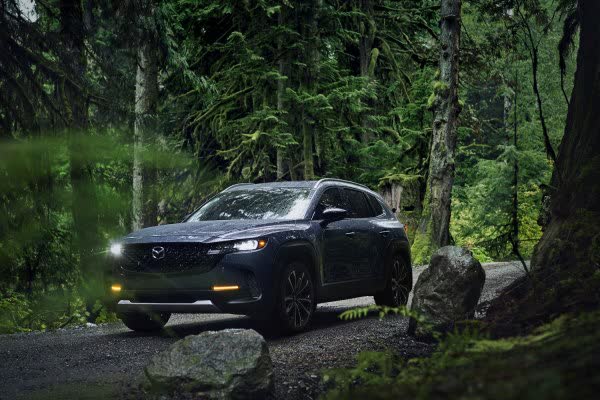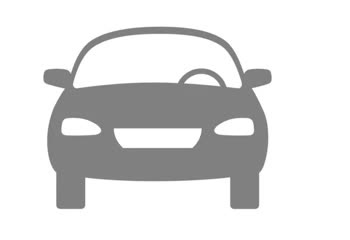Everything you need to know about specifications and performance - Mazda CX-50 CX-50 2024 - 2.5 (219 Hp) Hybrid eAWD eCVT

Overview:
What is the engine capacity of a Mazda CX-50 2024?
The engine capacity of the Mazda CX-50 2024 is 2487.
Mazda CX-50 2024 How many horsepower?
The engine power of the Mazda CX-50 2024 is 176 Hp @ 5700 rpm..
What is the Mazda CX-50 2024 engine?
Mazda CX-50 2024 engine is Dynamic Force. (Click to see other cars using the same engine)
How powerful is the electrical system in the Mazda CX-50 2024?
The power of the electrical system in the Mazda CX-50 2024 is 219 Hp hp.
How much gasoline does a Mazda CX-50 2024 consume?
The Mazda CX-50 2024 consumes 6.2 liters of gasoline per 100 km
General:
Brand: Mazda
Model: CX-50
Generation: CX-50
Modification (Engine): 2.5 (219 Hp) Hybrid eAWD eCVT
Start of production: July, 2024
End of production:
Powertrain Architecture: FHEV (Full Hybrid Electric Vehicle)
Body type: Sports Utility Vehicle (SUV)
Seats: 5
Doors: 5
Engine:
Engine systems: Start & Stop System
Power: 176 hp @ 5700 rpm.
Power per litre: 70.8 hp/l
Torque: 221 nm @ 3600-5200 rpm.
Engine Model/Code: Dynamic Force
Engine displacement: 2487
Number of cylinders: 4
Engine configuration: Inline
Number of valves per cylinder: 4
Fuel injection system: Direct injection and Multi-port manifold injection
Engine aspiration: Naturally aspirated Engine
Valvetrain: DOHC
Engine layout: Front, Transverse
Cylinder Bore: 87.5 mm
Piston Stroke: 103.4 mm
Compression ratio: 14:1
Maximum engine speed: 5700 rpm.
Performance:
Fuel Type: Petrol (Gasoline)
Fuel consumption (economy) - urban: 6 l/100 km
Fuel consumption (economy) - extra urban: 6.4 l/100 km
Fuel consumption (economy) - urban (EPA): 6 l/100 km
Fuel consumption (economy) - extra urban (EPA): 6.4 l/100 km
Fuel consumption (economy) - combined (EPA): 6.2 l/100 km
Fuel consumption (economy) - combined: 6.2 l/100 km
Emission standard: LEV3 SULEV30
Maximum speed: 180 km/h, Electronically limited
Weight-to-power ratio: 8.3 kg/Hp, 120.5 Hp/tonne
Weight-to-torque ratio: 8.2 kg/Nm, 121.6 Nm/tonne
Electric system:
Gross battery capacity: 1.59 kWh
Battery technology: Nickel-metal hydride (NiMH)
System power: 219 hp
Electric motor power: 118 hp
Electric motor Torque: 274 nm
Electric motor location: Integrated into the transmission
Electric motor type: Synchronous
Battery weight: 47 kg
Battery voltage: 244.8 V
Maximum revolutions of the electric motor: 7000 rpm.
Space:
Kerb Weight (kg): 1818
Max. weight (kg): 2329
Max load (kg): 511
Trunk (boot) space - minimum: 826 l
Permitted trailer load with brakes (12%): 680 kg
Fuel tank capacity: 55 l
dimensions:
Length: 4726 mm
Width: 1920 mm
Height: 1648-1671 mm
wheelbase: 2815 mm
Width including mirrors: 2052 mm
Front overhang: 960 mm
Rear overhang: 950 mm
Ride height (ground clearance): 193 mm
Minimum turning circle (turning diameter): 11.8 m
Approach angle: 17.4-18°
Departure angle: 22.6-23°
Powertrain, Suspension and Brakes:
Drivetrain Architecture: An Internal combustion Engine (ICE) drives the front wheels, one electric motor drives the front wheels, one electric motor drives the rear wheels. There is an ability for running in full electric or mixed mode.
Drive wheel: All wheel drive (4x4)
Number of gears and type of gearbox: automatic transmission eCVT
Front brakes: Ventilated discs, 326 mm
Rear brakes: Disc, 325 mm
Assisting systems: ABS (Anti-lock braking system)
Steering type: Steering rack and pinion
Power steering: Electric Steering
Tires size: 225/65 R17; 225/55 R19
Wheel rims size: 7J x 17; 7.5J x 19
Front suspension: Independent, type McPherson with coil Spring and anti-roll bar
Rear suspension: Torsion
See also

Same production year and almost the same engine capacity.
Its production began in 2024 until Now

Write a comment